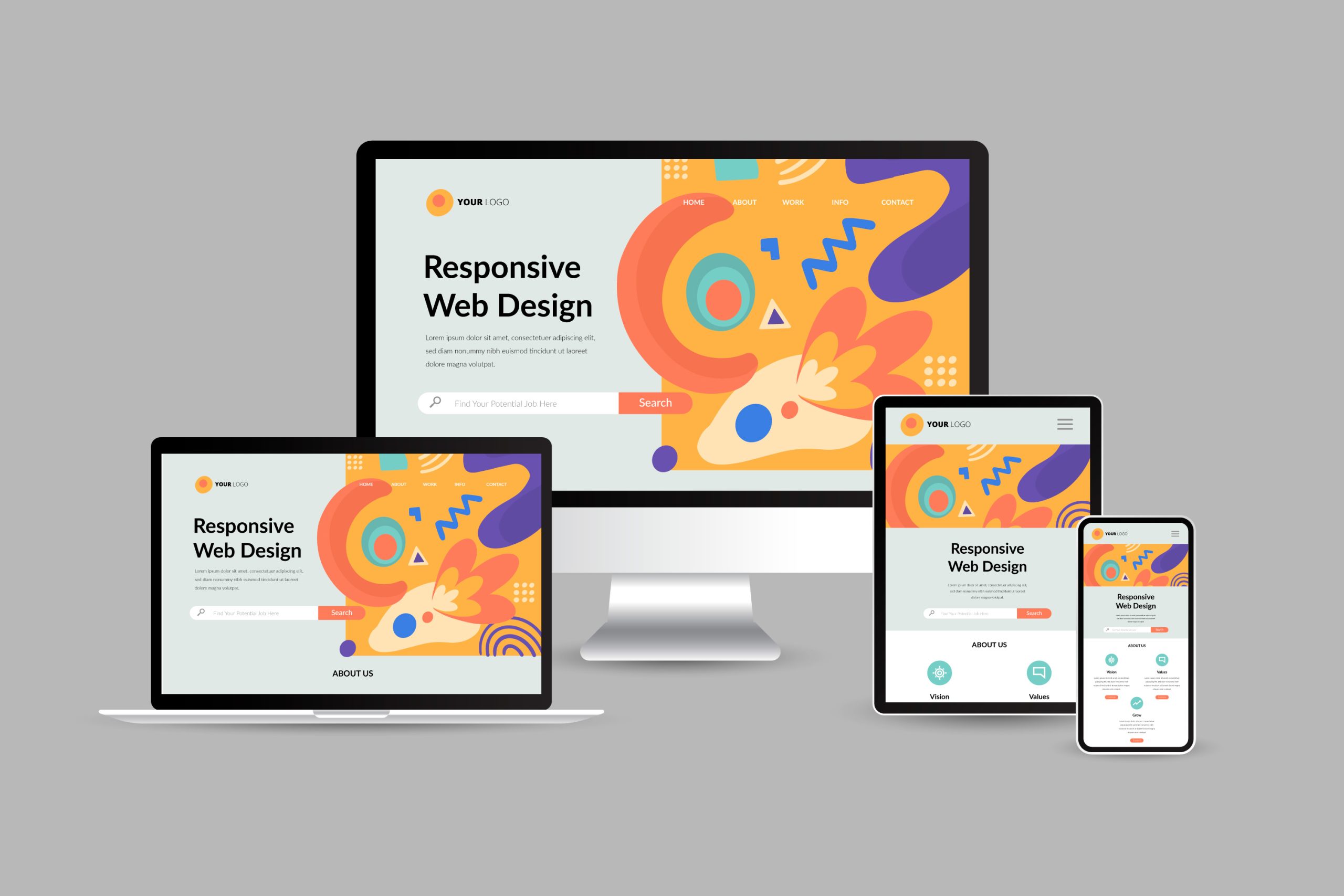Responsive Web Designing
What is Responsive Web Design?
Responsive Web Designing (RWD) is an approach to web design aimed at creating websites that provide an optimal viewing experience across a wide range of devices. This means the website should look good and be easy to use whether you’re on a desktop computer, a tablet, or a smartphone. The primary goal is to ensure that the website’s layout adjusts and adapts based on the screen size and orientation of the device being used.
Key Principles of Responsive Web Design
- Fluid Grids:
- Use relative units like percentages rather than absolute units like pixels to define the layout and elements of a webpage. This ensures that elements resize proportionally to the screen size.
- Flexible Images:
- Images should be scalable and capable of resizing within the fluid grid. This prevents images from being too large on smaller screens and ensures they maintain their aspect ratio.
- Media Queries:
- CSS media queries allow the application of different styles based on the device’s characteristics, such as its width, height, and orientation. Media queries enable the creation of breakpoints where specific styles are applied, allowing the design to adapt at various screen sizes.
- Viewport Meta Tag:
- Including the viewport meta tag in the HTML head ensures that the website is displayed correctly on mobile devices. This tag controls the layout viewport and scaling, making sure the content fits within the screen.
Benefits of Responsive Web Design
- Improved User Experience:
- A responsive website provides a seamless and consistent user experience across different devices, enhancing usability and satisfaction.
- Increased Mobile Traffic:
- With the growing use of mobile devices, a responsive design ensures that your website captures and retains mobile users, which can significantly increase traffic.
- Cost-Effective:
- Developing a single responsive website is more cost-effective than creating separate versions for desktop and mobile. It also reduces maintenance efforts as updates only need to be made in one place.
- SEO Benefits:
- Search engines like Google prioritize mobile-friendly websites in their rankings. A responsive design can improve your site’s SEO performance and visibility in search results.
- Future-Proofing:
- A responsive design is adaptable to new devices and screen sizes, ensuring that your website remains functional and aesthetically pleasing as technology evolves.
Best Practices for Implementing Responsive Web Design
- Mobile-First Approach:
- Design for the smallest screen first and progressively enhance the design for larger screens. This ensures a better experience on mobile devices and avoids unnecessary elements that may clutter the design.
- Touch-Friendly Design:
- Ensure that buttons and interactive elements are large enough to be easily tapped on touchscreens. Provide sufficient spacing between elements to avoid accidental clicks.
- Performance Optimization:
- Optimize images and other media for faster loading times. Use techniques like lazy loading to defer the loading of non-critical resources, enhancing performance on slower networks.
- Testing Across Devices:
- Test your design on a variety of devices and screen sizes to ensure compatibility and functionality. Tools like browser developer tools and online responsive design testers can help identify issues.
- Content Prioritization:
- Prioritize essential content and features for smaller screens, ensuring that users can access key information quickly and easily. Consider using techniques like collapsible menus and accordions to save space.
Tools and Frameworks for Responsive Web Design
- CSS Frameworks:
- Frameworks like Bootstrap, Foundation, and Bulma provide pre-designed responsive components and grid systems, simplifying the development process.
- Responsive Design Testing Tools:
- Tools like BrowserStack, Responsinator, and Google’s Mobile-Friendly Test allow you to test your website’s responsiveness on various devices and screen sizes.
- Design Software:
- Design tools like Adobe XD, Sketch, and Figma offer features to create and preview responsive designs, aiding in the visualization and prototyping stages.

